SALT LAKE CITY (Day 7 - part 1)
We had planned to make a few stops along the way but it kept raining all morning.



Fortunately, by the time we arrived in Salt Lake City, things had dried up enough to do a bit of site-seeing. We parked in a neighborhood near the state capitol building then walked up a loooong, steeeep hill. Prior to 1888, this was named Arsenal Hill.

Photos never depict steepness very well!


The Vietnam, Cambodia and Laos Veterans Memorial (dedicated in 1989) featured a circular wall listing 388 Utah citizens who were killed or M.I.A. during the Vietnam War and a bronze statue of a soldier.
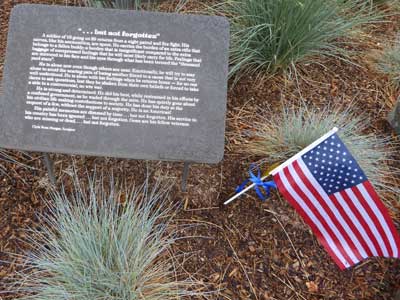

With flags at half mast, this felt like an appropriate place to visit for Memorial Day.
On the plaque were some words from the sculptor, Clyde Ross Morgan:
"... but not forgotten"
A soldier of 19 going on 39 returns from a night patrol and fire fight. His nerves, like his ammunition, are spent. He carries the burden of an extra rifle that belongs to a fallen buddy; a burden that is insignificant compared to the extra baggage of unexpressed feelings that he will most likely carry for life. Feelings that are mirrored in his face and his eyes through what had been termed the "thousand yard stare".
He is alone now even though others are near. Emotionally, he will try to stay alone to avoid the searing pain of losing another friend to a cause that is not very well understood. He is alone with his feelings when he returns home - for no one dares to ask questions, lest they be shaken from their own beliefs and forced to take a side in a controversial, no win war.
He is strong and determined. He did his best, while restrained in his efforts by a confused government, as he waded through the mire. He has quietly gone about his civilian life making contributions to society. He has done his duty at the request of a few, without the support of a majority. He is an American!
His painful memories are dimmed by time ... but not forgotten. His service to his country has been ignored ... but not forgotten. Gone are his fellow veterans who are missing or dead, ... but not forgotten.




The building was constructed from 1912 to 1916.
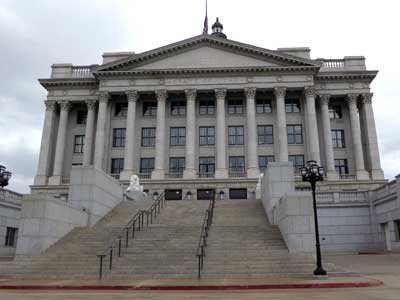

Four lions guarded the east and west entrances. The originals were sculpted in 1915 but were renovated in 2004.
We entered the ground (or first) floor.


The state seal
Early Mormon pioneer settlers wanted to name their new state Deseret (a word meaning "honeybee"). Instead, Congress created a territory in 1850 and named it Utah after one of the region's Native American tribes. But beehives remained an important symbol for the citizens. The beehive represents industry and the values of perseverance and thrift. When Utah entered the Union in 1896 as the 45th state, the beehive was included as part of the official seal.


Note the beehive pattern in the tile ... A replica of the Liberty Bell


Rows of interesting exhibits


The different types of rocks and materials used to build the capitol


Beehives


Apparently many movies have been made using Utah's incredible scenery. “Utah. America’s Film Set” had several dioramas of various Hollywood films.

Monument Valley (Stagecoach, 1939)


The film crew!

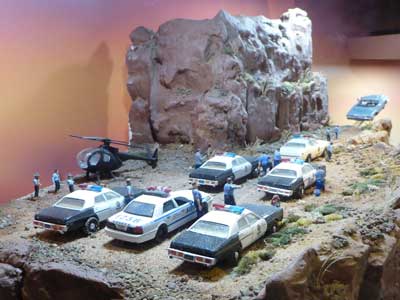
Dead Horse State Park (Thelma & Louise, 1991)



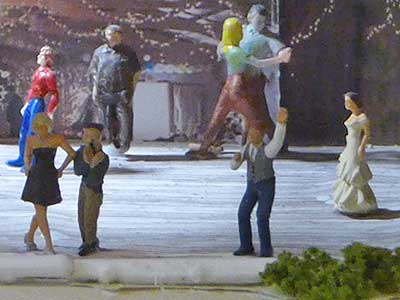
Lehi Roller Mills (FootLoose, 1984)
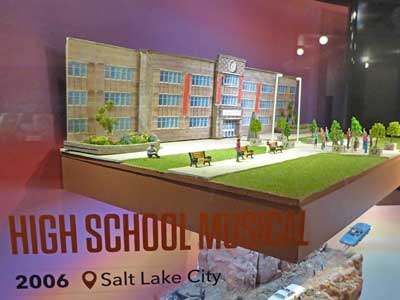

East High School in Salt Lake City (High School Musical, 2006)


Bonneville Salt Flats (Pirates of the Caribbean, 2003)
The second floor:


The interior ceiling of the dome was 165 feet above the floor.

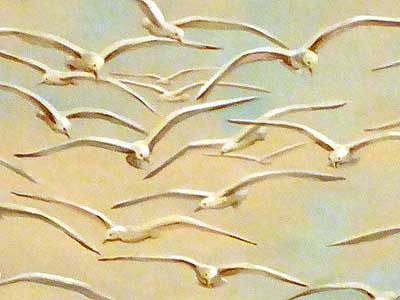
Inside the dome was painted an enormous flock of California Seagulls, Utah's state bird. Even though they looked tiny from so far below, the largest ones had a wingspan of six feet.
The Miracle of the Gulls was an event sometimes credited for saving 4,000 Mormon pioneers in the Salt Lake Valley in 1848. Legions of seagulls swooped in and spent two weeks eating thousands of crickets (now called Mormon crickets) that were devouring all of their crops. While seen by the people (who had only recently arrived to the region) as something miraculous, it was actually a common event.
As a reproductive strategy (overwhelming their predators with massive numbers which allows a percentage of them to survive and reproduce), Mormon crickets cyclically swarm in this area, eating all plant material and dead insects in their path, including their own species. The many types of gulls that inhabited the Great Salt Lake area would regularly feast on them.

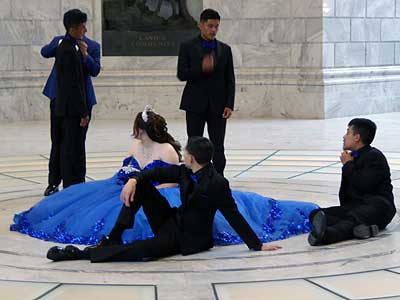
Some kind of special event


Brigham Young (1801 - 1877) ... Martha Hughes Cannon (1857-1932)
Brigham was the second president of the Church of Jesus Christ of Latter-day Saints (Mormons). During that time, he led his followers from Nauvoo, Illinois, to the Salt Lake Valley. He founded Salt Lake City and served as the first governor of the Utah Territory. As a polygamist, he had at least 56 wives and 57 children.
Martha was a physician, suffragist and the first female state senator in the US. Her family emigrated from England by ship in 1861. Over the course of the next 18 months, they made their was to Salt Lake City, but her father died 3 days later. In 1878, she received a degree in chemistry then went on to earn a medical degree in 1880 and a pharmaceutical degree in 1882. Women had been given the right to vote in 1870 but an act was passed in 1887 taking that away. So Martha became a leader for women's suffrage. In 1896, she was elected a senator... defeating her own husband. She introduced bills on good food, sanitation, help for the handicapped, as well as one that created the State Board of Health, which provided regulations on contagious diseases such as tuberculosis.


Heading upstairs ... A quick glimpse from the third floor
return • continue

